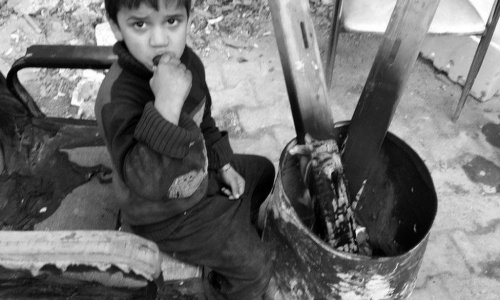Behind the preserved mosques and madrassas of the Silk Road lies another Uzbekistan – one that’s brash, messy and filled with gleeful anarchy.
The pools beneath the pristine madrassa in Bukhara’s blue-tiled Lyab-i Hauz square were still. Men in long tunics hawked tea from silver pots in the cafes across the way. And narrow streets rolled into four-gated towers that surrounded the town centre, where sellers peddled embroidered jackets, dried spices and leather shoes. It was everything I had ever imagined the old Silk Road cities of the Central Asian steppe to be.
"Come on,” Vladimir Kim rolled his eyes. "I’ll show you the real Bukhara.”
As I came to learn, there are two Uzbekistans. There’s the one with the meticulously – some might say aggressively – restored cities such as Bukhara and Samarkand, where 19th-century merchant’s houses have been transformed into boutique hotels and their old stucco and marble parlours converted into breakfast rooms. This is the Uzbekistan that visitors are ferried to on tours, and where urban centres are kept as pale monuments to when this vast and arid region was one of the financial and intellectual centres of the medieval Islamic world.
And then there’s the one the Uzbeks know – the one beyond the Silk Road.
Once Kim, the only English-speaking guide in my Silk Road Tours group, realised that I was the only English-speaking traveller (everyone else was either French or Italian), he decided to break away from our planned itinerary.
Behind the preserved mosques and madrassas of Silk Road Bukhara, he showed me another city of faded Soviet high rises – remnants of the 67 years Uzbekistan spent as part of the USSR. He also took me to a local bazaar behind the citadel where old women sold bread stamped with the distinctive Bukharian seal (each province gets its own calligraphic design) out of plastic bags, and where young women came to buy their velvet bridal attire.
I expressed surprise at the cost of one of the dresses: 850,000 som, roughly an average worker’s monthly salary. I wondered whether the shopkeeper was quoting me a tourist price.
"People spend everything on weddings here,” Kim explained. They get invitations printed (even today, on a press powered by a local stream) or hand-drawn on handmade paper. They spend their savings on the clothing, and still more on the food. Here, as in many other countries with historically nomadic populations, hospitality towards strangers is the greatest of virtues and failure to feed everyone in the village is an embarrassment.
While the rest of the group went to a restaurant near the Lyab-i Hauz, Kim led me through the market, weaving between silk scarves and imitation designer handbags, dodging women with heads bowed under teetering trays of pumpkin-stuffed samsas (the Central Asian version of samosas) and plastic bags of popcorn.
I admired a woman’s coin-fringed scarf, worn around her face, and asked, in halting Russian (still the lingua franca here), where I could find one like it.
She snapped her fingers and spoke in a rapid mixture of Russian and Uzbek. There was no mistaking her meaning: come.
Two minutes later, we were standing in front of a corrugated tin stall with coin-jangling silks arched under the ceiling. I asked Kim if she worked there. "No,” he said. "She just wanted to help you, that’s all.”
In Bukhara’s historic centre, the tourist part of the city, commerce underpins social interaction. But here, a few minutes’ walk from the medieval madrassas, the dynamic gave way to gleeful anarchy. Unencumbered by the eerie formality of the tourist trade, the market atmosphere was less Eastern bazaar and more Russian bazroba – a market that's brash, messy and surprisingly hospitable.
(BBC)




www.ann.az
Follow us !











